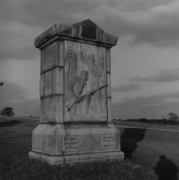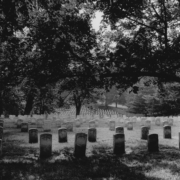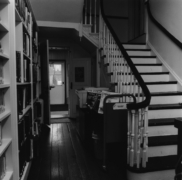William Earle Williams is a photographer dedicated to making the invisible visible. Working in the lineage of Friedlander and Walker Evans before him, Williams seeks out – in his own words – “the anonymous, unheralded, and uncelebrated places” in the United States as well as abroad. Born adjacent to the National Military Park in Vicksburg, Mississippi, Williams is at home among monuments. They are the cornerstones of his lifelong devotion to the subject of History, which he studied in college. Yet Williams is most interested in the histories of people, places and things often omitted from textbooks, plaques and even collective memory. His photographs provide the keys to remembering and honoring these personages, sites and events, specifically uplifting and amplifying the narratives of Black Americans.
Using medium and large format cameras and sharp focus with a large depth of field, Williams harnesses photography’s ability to document but also to provide a space for contemplation among the everyday. In Woods Culp’s Hill, Gettysburg, Pennsylvania, Williams meditates on the craggy topography that once gave the Union Army its advantage in the Battle of Gettysburg. Straying from the more iconic images of this historic site, Williams traces the patterns of light and shadow against the trees and ground cover. This is echoed in Telegraph Road, Port Hudson Battle Site, Louisiana, an unmarked swampy area along the Mississippi River in 2004, where the 1st Louisiana Native Guard, one of the first all-Black regiments in the Union Army, fought valiantly. Williams takes us to these sites through the lens of his camera, calling us to stop and consider how something so ordinary can be so extraordinary.











